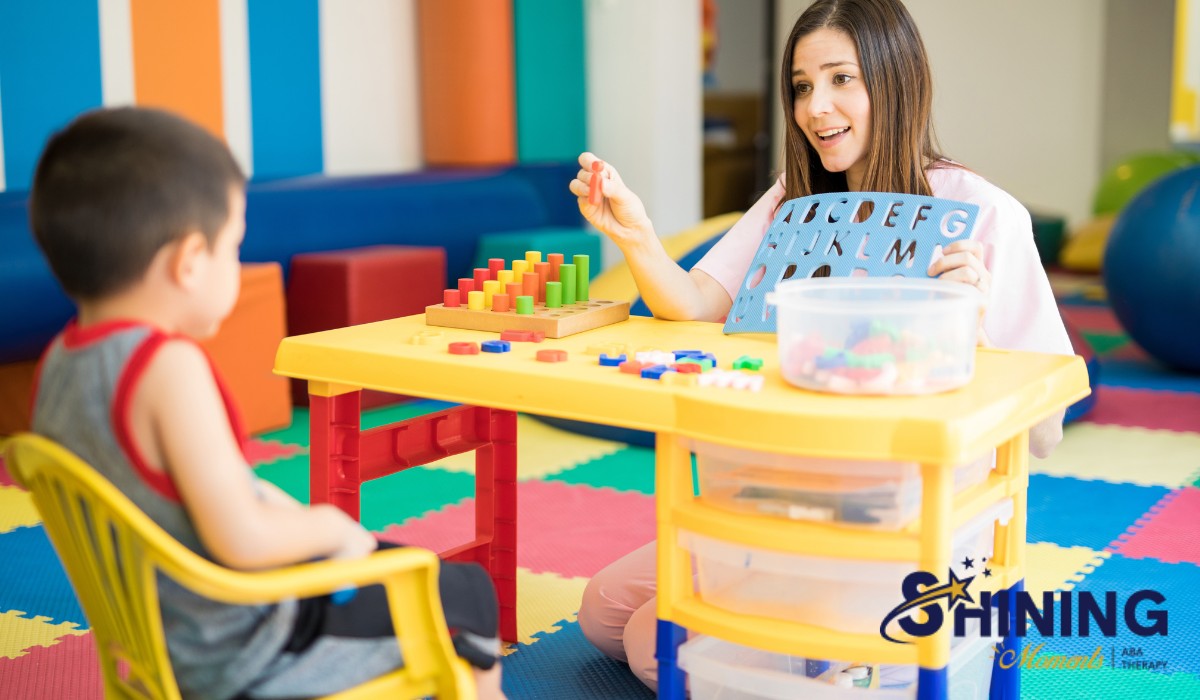Key Points:
- Discrimination training in ABA helps children differentiate between cues, improving attention and learning outcomes.
- Structured teaching, prompts, and reinforcement strategies guide children in recognizing and responding to different stimuli.
- Parents can actively support progress at home using simple, consistent techniques integrated into daily routines.
When children with autism begin learning new skills, one of the first hurdles is understanding that different situations, objects, or cues require different responses. This is where discrimination training comes in—a cornerstone of Applied Behavior Analysis (ABA) therapy that helps kids distinguish between stimuli and make accurate choices. By teaching children to recognize differences and respond appropriately, discrimination training lays the foundation for more complex skills such as language, social interaction, and problem-solving.
This article explores what discrimination training is, why it matters, and how parents can support their children both in therapy sessions and at home.
What is Discrimination Training?
Discrimination training is an ABA-based teaching method that helps children identify and respond differently to various stimuli. Simply put, it teaches a child that not every cue or object is the same—some signals require one action, while others require another.
For example, a child might learn to:
- Say “ball” when shown a ball but not say it when shown a block.
- Press a specific button on a tablet to get a reward while ignoring other buttons.
- Choose the red cup when asked for “red” and the blue cup when asked for “blue.”
The goal is to strengthen learning, improve focus, and encourage accurate responses, which in turn supports broader skill development, from communication to self-help.
Discrimination training is often combined with reinforcement strategies, prompting, and repeated practice to ensure children not only learn but retain these skills over time.
 Why Discrimination Training Matters for Children with Autism
Why Discrimination Training Matters for Children with Autism
Children with autism may struggle with generalization, which means understanding that a skill learned in one setting applies elsewhere. Without discrimination training, a child might:
- Reach for the wrong item when asked.
- Confuse instructions or social cues.
- Respond inconsistently to visual or verbal signals.
By teaching children to notice subtle differences and respond appropriately, discrimination training helps:
- Improve attention and focus.
- Reduce frustration and challenging behaviors caused by confusion.
- Build confidence as children make correct choices and experience success.
In ABA therapy, these outcomes are reinforced through structured, consistent practice, making everyday tasks more manageable and enjoyable for children and families.
Core Principles of Discrimination Training
Before diving into practical tips, it’s helpful to understand the key principles behind discrimination training. These principles guide therapists and parents alike:
- Stimulus Control: Ensuring the correct behavior happens in response to a specific cue.
- Prompting: Using guidance, hints, or models to help a child respond correctly.
- Reinforcement: Providing positive feedback or rewards to strengthen the desired response.
- Error Correction: Gently guiding the child when a response is incorrect to prevent learning mistakes.
- Generalization: Practicing the skill across different settings, people, and materials so it becomes natural.
By applying these principles consistently, children gradually internalize the skill, which can then be extended to more complex learning situations.
 Practical Tips for Parents to Support Discrimination Training at Home
Practical Tips for Parents to Support Discrimination Training at Home
Parents play a crucial role in reinforcing skills outside therapy. Here’s how you can integrate discrimination training into everyday routines. Before each tip, remember: the goal is to keep practice short, frequent, and meaningful.
1. Start with Highly Distinct Stimuli
Choose items or cues that are clearly different at first. For instance:
- Use a red ball and a blue block.
- Ask your child to point to “red” rather than using two similar shades.
This helps the child experience early success, boosting confidence before moving to more subtle distinctions.
2. Use Clear, Consistent Instructions
Children with autism learn best when instructions are simple and predictable. Avoid complex language at the beginning. Examples:
- “Pick the ball” instead of “Can you find the ball for me?”
- “Touch the triangle” instead of “Which one is the triangle?”
Consistency reduces confusion and helps your child make connections between the cue and the correct response.
3. Incorporate Visual and Physical Prompts
Prompts help guide children without taking over the task. Types of prompts include:
- Gestural: Pointing to the correct item.
- Modeling: Demonstrating the desired action.
- Physical: Gently guiding the child’s hand.
Prompting gradually fades over time, ensuring the child responds independently.
4. Reinforce Correct Responses Immediately
Positive reinforcement is essential. Offer:
- Verbal praise: “Great job!”
- Small rewards: Tokens, stickers, or preferred snacks.
- Access to preferred activities: Extra playtime or choice of game.
Immediate feedback helps children connect the correct behavior with a positive outcome, reinforcing learning.
5. Practice Across Different Settings
Once a skill is mastered in one context, practice it in multiple environments:
- Living room, kitchen, or playground.
- With different people, such as siblings or grandparents.
- Using different materials, like cups, toys, or pictures.
This ensures the child can generalize the skill beyond the therapy setting.
Common Challenges and How to Overcome Them
Even with structured ABA strategies, children may face challenges. Recognizing these early helps you support progress effectively.
1. Confusing Similar Stimuli
- Some children may struggle when items look alike.
- Solution: Gradually introduce more subtle differences after mastery of distinct items.
2. Short Attention Spans
- Long practice sessions can cause fatigue or frustration.
- Solution: Break tasks into short, frequent sessions and include motivating breaks.
3. Inconsistent Responses
- Some children may respond correctly only sometimes.
- Solution: Track progress, reinforce success, and practice frequently across settings.
4. Over-Reliance on Prompts
- Prompting can inadvertently become a crutch.
- Solution: Fade prompts gradually, encouraging independent responses over time.
5. Resistance to Change
- Changes in routine or setting can confuse children.
- Solution: Introduce changes gradually and maintain core routines to reduce anxiety.
Integrating Discrimination Training with Other ABA Strategies
Discrimination training is most effective when combined with other ABA techniques. Key integrations include:
- Task Analysis: Breaking down complex skills into small, manageable steps.
- Errorless Learning: Minimizing mistakes by guiding the child to success in early trials.
- Functional Communication Training (FCT): Pairing correct responses with communication skills, such as requesting items appropriately.
- Generalization Training: Ensuring skills are practiced across multiple settings, people, and materials.
Through this combination, children build confidence, learn faster, and experience consistent success in daily life.
 How Shining Moments ABA Supports Families
How Shining Moments ABA Supports Families
At Shining Moments ABA, we use discrimination training as a core component of personalized ABA therapy plans. Our approach focuses on:
- Creating engaging, motivating learning experiences for children.
- Partnering with parents to provide practical strategies for home practice.
- Tracking progress to ensure skills generalize across settings and situations.
Whether your child is learning colors, shapes, or more complex tasks, our programs aim to strengthen attention, reduce confusion, and promote independence.
If you’re looking for supportive, evidence-based ABA therapy in New Jersey or Maryland, Shining Moments ABA offers structured programs that help children learn, generalize, and thrive. Reach out to discuss a personalized plan that fits your child’s needs.


